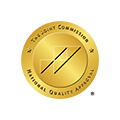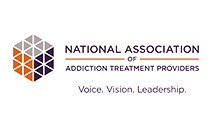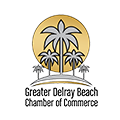Believe in Yourself
Seacrest Recovery Center
Providing substance abuse and mental health treatment, utilizing proven therapeutic methods and individualized treatment tailored to your specific needs
What is Dual Diagnosis Treatment
Substance abuse, for many people, seems like a simple issue with even simpler solutions. The reality is that addiction and its treatment is much more complicated. While undergoing initial addiction treatment, medical professionals look for reason why the addiction began to begin with. In a substantial number of instances, the root cause leads to a dual diagnosis.
Dual diagnosis occurs when people have a substance abuse in conjunction with a mood or psychiatric disorder. The mental aspects are not often clear until treatment begins for the substance abuse issue. Some people are aware of existing mental disorders and chose to self-medicate, ultimately leading to addiction. Other people, however, are often unaware and only know that their addiction helps them feel better. Dual diagnosis involves two separate treatment plans, either individually or combined.
In previous years, people who were diagnosed with a mental disorder and substance abuse had difficulty with receiving proper treatment. If a person was unaware of an existing, previously diagnosed mental illness, it was difficult to determine which symptoms were due to the substance and which symptoms stem from mental illness. Sufferers had to receive addiction treatment and remain sober before the mental aspect could be addressed. People with a dual diagnosis often relapsed before the mental aspect could be adequately treated.
Dual diagnosis treatment is often more difficult because although each problem is separate, they are co-dependent. The addiction intensifies the mental disorder and vice versa. It can be difficult for medical professionals to differentiate similar symptoms. Correct identification combined with concurrent treatment is crucial.
Each dual diagnosis treatment will be different because every patient is different. Chemical imbalances and physical damage are different for each patient. Treatment plans, therefore, often need to be customized to accommodate for such differences. Additionally, treatments must be adapted over time as a patient’s circumstances change.
Multiple approach options are available for dual diagnosis treatment. A partial approach involves treating the issue deemed most detrimental. Sequential treatment involves labeling one issue as primary and the other as secondary, and then treating the primary issue first. The secondary issue is treated only after the primary issue is under control. Parallel treatment involves two different treatments, provided at the same time by two different providers. Success of a parallel plan is dependent on both medical professionals conferring with each other regularly, which tends to be difficult.
Integrated treatment tends to be the preferred approach. One treatment plan is designed to address both issues at the same time, and as comprehensively as possible. The addiction and the mental illness are both labeled as primary and given equal attention. In addition to receiving proper treatment for both issues concurrently, integrated treatment plans are designed to encourage patients to engage in their care, remain sober, and increase a successful outcome.
Types of techniques that can be included in treatment plans are a few different forms of therapy. Individual therapy allows patients to confer with their counselor or psychologist on a more personal level. Group therapy is a beneficial means of allowing patients to share their experiences with each other and create a safe zone with other patients that can help support each other. Family therapy encourages families to deal with their issues surrounding the addiction and mental disorders. It is also an opportunity for the people who are closest to the patient to be more informed through knowledge about what the patient is going through and what to expect as treatment continues.
Dual diagnosis treatment can be received through either inpatient or outpatient care. Inpatient treatment can provide the constant monitoring and intensive environment. Outpatient treatment is best suited for patients who have already had initial inpatient treatment as well as those who are medically stable and do not require constant monitoring. In both instances, it is imperative that patients and their family understand that there’s no quick fix. Detox provides the patient with a means of rapidly removing substances from their symptom, but that does not stop the addiction and does not address the mental issues.
Today Is The Day
You Never Have To Feel This Way Ever Again
One simple call to our caring and compassionate staff, and you can be on your way to a lifetime of freedom and recovery

As Seen On Hulu
Seacrest Recovery Center is The Featured Drug & Alcohol Rehab on Jelly Roll's Save Me Documentary on Hulu Originals
Trusted Treatment Provider
Certified and Accredited Both Locally and Nationwide






Our Clients Believe In Us
And We Believe In Them!
Here Is What They Are Saying
About Seacrest Recovery
Your First Step To Recovery
Our Locations

Columbus OH

Eatontown NJ

Willard OH














